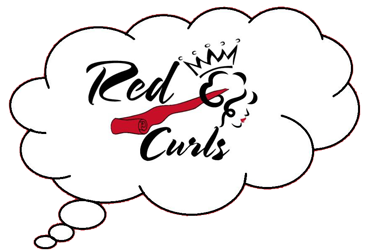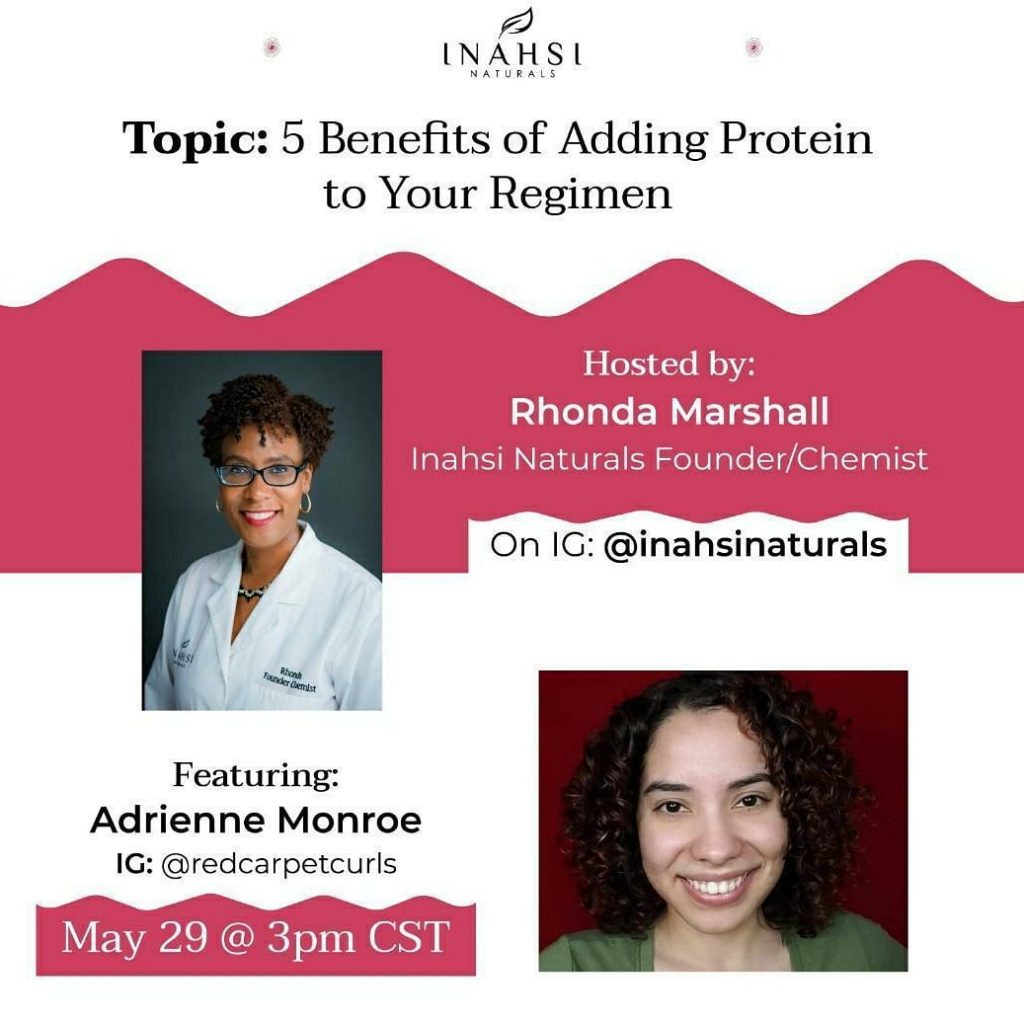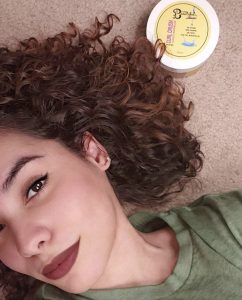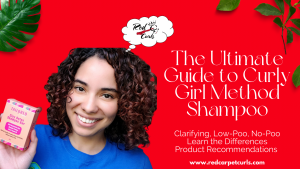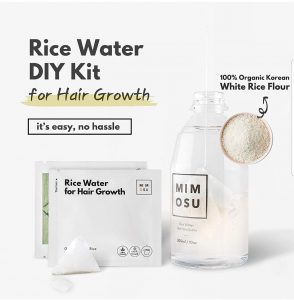My Beautiful #RedCarpetCurlsRoyalty,
I hope you’re excited because today’s piece is an extra special one! It’s the companion piece to the Inahsi Naturals Instagram Live Session I did today! I know Instagram only saves your live session for 24 hours, so I wanted to write up the topic for you right here, that way you can bookmark it and always refer back to it since Protein is such an important topic! So without further adieu let’s jump into today’s topic, 5 Benefits to Adding Protein to Your Hair Care Regime.
Why is Protein Important for Naturally Textured Hair?

So, let’s start with the basics, why is protein important for naturally textured hair? This is why the science matters…
I’ve discussed protein in previous posts such as Protein 101 and Protein V.S. Moisture Balance: How to Know What My Hair Needs? As always, I refer to credible academic sources for my information.
For this question, I always refer to The Milady Standard Cosmetology Textbook , “without protein there is no hair. Hair is approximately 90 percent protein.”
This means the overwhelming majority of your hair structure is made of protein. Hair encounters damage on a daily basis from simple manipulation like tight styles and brushing your hair. You even encounter damage from the sun, as the canopy of your hair (top layer) is subjected to the sun, the canopy can become more dry and porous than the under layer of your hair. Not to mention self-inflicted damage like:
- Dying
- Bleaching
- Relaxing
- Perms
- Straightening
- Curling
Therefore we need a steady protein source in your hair regimes. While the best way to acquire your protein is through your diet, you will have to supplement protein treatments into your hair regime anyway. The reason is most protein treatments help repair the cuticle.
Most heavy protein treatments don’t penetrate the Cortex(the innermost layer of your hair) of your hair, they simply sit on the surface of the Cuticle(outermost layer of the hair) and fix the surface of the hair strand by by filling in any holes and cracks in the cuticle layer. You can make cracks and tears in the cuticle layer by over-cleansing, brushing, styling, you can even develop damage from not having a consistent hair care routine!
That is why you need protein to penetrate the cortex because you need to strengthen the hair from within. But only hydrolyzed proteins and amino acids can do this. Amino acids and hydrolyzed proteins are so much smaller on a molecular level, they are better to penetrate the hair strands to much deeper layers. They are gentle protein that have been broken down so much they are small enough to work in ways normal protein just cannot.
That’s why the best form of protein (in my humble opinion) are amino acids. Amino acids are broken down protein building blocks. They are much smaller in weight and size which helps penetrate the cortex, strengthen and condition from within for increased elasticity (stretch) and strength.
Now that you understand what protein is, and how it effects the hair, let’s get into just five of the countless benefits of adding protein to your hair care regime.
1) Protein temporarily fills the gaps in the cuticle layer increasing hydrophobicity of hair keeps hair color vibrant

According to an article in The Journal of Experimental Dermatology, “The basic structure of hair is a cuticle, cortex, and medulla (in some).” The cuticle is the most important layers in the hair strand! The cuticle acts as the protective armor of each individual hair strand. A healthy hair cuticle layer protects the hair from penetration and prevents damage to hair fibers. When the cuticle layer is healthy, it is chemically resistant and consists of overlapping scales like shingles on the roof. If you want to be super fancy and technical, the overlapping cells are known as keratinocytes. The scales lift and seal to allow moisture in and out of the hair.
Each cuticle cell contains a thin membrane/layer made of protein. This thin membrane is referred to as the epicuticle, it covers the scales of the cuticle with a lipid layer that includes one very important lipid(amongst others) but for this conversation the most notable lipid is referred to as 18-MEA. Again, if you want to be super fancy the technical name for 18- MEA is 18-methyl eicosanoic acid. This is what’s responsible for the hydrophobicity of the hair.
Hydrophobicity is just a five dollar word for water-repelling. This lipid layer is only removed by strong chemicals like bleach and perms. It is also destroyed with thermal heat styling like straightening or curling the hair. These types of procedures destroy the water repelling layer increasing it’s hydrophila.
Hydrophilia basically means water-attracting. If you destroy the lipid layer protecting the cuticle you will destroy the protective layers keeping moisture sealed in the hair. Without that sealing moisture escapes the hair leaving it dry and brittle, this eventually leads to split ends and breakage.
Protein essentially works like Spackle to fill in the gaps and holes in the cuticle. If there are no gaps in the cuticle layer, that means no excess water will be released from the hair which normally causes dry hair and breakage. If you don’t have that lipid layer in tact (which many of us do not) then protein is the substitute, to repel water. This doesn’t mean water will never penetrate and moisturize the strands, it just means it will help you keep that moisture since the damaged hair doesn’t have the ability to hold it in. Think about your wash day. You now have moisture in your hair you want to seal it in. If your cuticle layer is healthy, or you recently did a protein treatment, protein will attract more moisture and then seal it into the hair for that shine and bounce we are always looking for.
2) Protein – specifically amino acids help increase moisture retention

A 2007 article in the Journal of Cosmetic Science found, “When amino acids are applied to hair as the state of simple aqueous solution, uptake of the amino acids is mainly controlled by ionic equilibrium. When amino acids were incorporated in hair care formulations, the interaction between the amino acids and other
ingredients. Uptake of pyrrolidone carboxylic acid (PCA), a derivative of glutamic acid, is en-
hanced by combining with arginine, an amino with strong affinity towards the hair. A hair conditioner incorporated with alanine improves hair surface hydrophobicity of bleach-damaged hair. Histidine and phenylalanine improve tensile strength. PCA was proved to be effective to improve color-retention of dyed hair.”
Basically, this is all really fancy wording for:
- When amino acids are applied to the hair as just a liquid, the amino acids are absorbed much more quickly. This is why I recommend using Bragg’s Liquid Amino Acids.
- When the amino acids were added to a formulated conditioner the amino acids traveled more quickly to the hair
- Hair has a particular affinity (or love) for the amino acid, Arginine, it acts as the “anchor” amino acid by absorbing quickly and encouraging other amino acids to absorb as well
- A hair conditioner incorporated with Arginine improves the water-repelling property of bleach-damaged hair
- Histidine and Phenylalanine amino acids improve the strength of each individual hair strand
- Amino acids help improve dyed hair’s ability to keep it’s the vibrant color for longer periods of time
As you can see, amino acids are so small they are able to penetrate to the Cortex of the hair. Not only does the gentle protein strengthen the hair strand, it increases it’s elasticity (stretching ability), and encourages more moisture to bind to the hair strand. Hair strands are made up of amino acid chains, providing more amino acids into your weekly regime will help protect hair against split ends and breakage, and it will keep your hair bouncy, shiny, and frizz-free.
3) Balances the moisture in your hair preventing hygral fatigue giving you elasticity and bounce

Too much of a good thing turns into a bad thing in the long run. Your hair is no different. The biggest issue with naturally textured hair is that it doesn’t receive enough moisture. Once we turn to the Curly Girl Method, we tend to over-do it with the moisture. Using all moisture-based products, eventually all moisture and no protein leads to Hygral Fatigue.
Hygral Fatigue is fancy wording for over-moisturizing your hair. Protein provides structure and strength to the hair strand, that is why it is made up of approximately 90% protein. When you add too much moisture to your hair without replenishing the protein, your hair cuticle becomes weak and damaged, due to excessive moisture entering and exiting the hair cuticle.
Hygral Fatigue prevents in a variety of different ways. Your hair may feel “gummy” or just too soft. You cannot seem to achieve the normal definition you have, even if you use your favorite products that always work for you. Your hair can begin to look limp and dull. You can even be experiencing excessive shedding or frizz. These are all unique signs indicating there just isn’t enough stability in the strand. Think about protein as cement. It’s what keeps the bricks (or cuticle shingles) from moving and causing more damage.
A consistent hair care regime that involves some kind of protein, whether it be gentle protein weekly like the amino acids or hydrolyzed protein, or even the heavy duty reconstructive protein treatments designed for extremely damaged hair every 4-6 weeks.
4) Protein prevents damage from your environment and everyday manipulation

There are many factors that go into the break down of the cuticle layer, we often refer to this as porosity. To understand how protein can help repair damage, let’s first discuss how damage occurs.
According to an article in the Journal of Investigative Dermatology Symposium Proceedings, an increase in porosity is called the weathering of hair. Weathering is the progressive degeneration from the root to the tip of the hair cuticle and then later the cortex due to routine everyday wear and tear. Long hair is especially susceptible to weathering. Features of weathering include damaged cuticles, longitudinal fissures known as split ends and eventually breakage. Increase in porosity is caused by many factors such as:
- Natural Weathering of hair (mechanical handling, I.e. tight high buns, brushes, combs, etc)
- Genetics (Genetics and curl pattern contribute to how tightly the cuticle layer adheres.)
- Stress
- Age
- Exposure to elements and environment
- Exposure to chemical treatment
- Excessive shampooing or unnatural products
You read that right, your own environment can damage your hair. For much warmer places, the sun is the biggest issue. The canopy of the hair (also known as the top section of your hair) suffers the most the environment, as it is the most exposed part of your hair. This is why most of us see more definition in the under layer of our hair as opposed to the top curls. The canopy is exposed to the sun the most and after about 200 hours of exposure the cuticle begins to damage. Protein fills these wholes and cracks, keeping the hair strong and resistant to damage.
5) Protein Prevents Frizz

Frizz is often a direct result of lack of moisture found in the hair strands. This says a lot about the health of the hair cuticle. If the cuticle is healthy then the scales are able to lift and seal with no issue, leaving you beautiful, shiny, and defined hair.
If you have been using moisture-based products only and have never introduced protein in your hair care regime then you will notice a constant frizz that will not go away. It doesn’t mean the Curly Girl Method doesn’t work or that your hair is too damaged beyond hope. It simply means either the hair isn’t capable of holding the moisture in, therefore you need protein to help supplement the lack of structure, or you need to clarify your hair. Those are often the two most common culprits for frizz.
As I explained earlier, protein helps moisture bind to the hair strands better. It patches the holes in the sinking boat and sets you up for smooth sailing…
Yeah, I got a little carried away with that last comparison but you get what I mean! Protein is a sort of insurance, your hair strands are fragile. They need TLC, we need to learn the proper ways to help our hair thrive so we can do away with all the harmful practices that have caused all the damage.
My best tip to every Queen and King reading this article now, is to start with gentle weekly protein. If you are past transitioning and your hair is relatively healthy, you don’t need huge reconstructive protein, it will overload the hair. Gentle weekly consistency will serve you far better.
If you need visual demonstrations on how to add amino acids or hydrolyzed protein to your deep conditioner to start, you can find them on the Red Carpet Curls YouTube Channel!
Any other questions? Let me know below!
